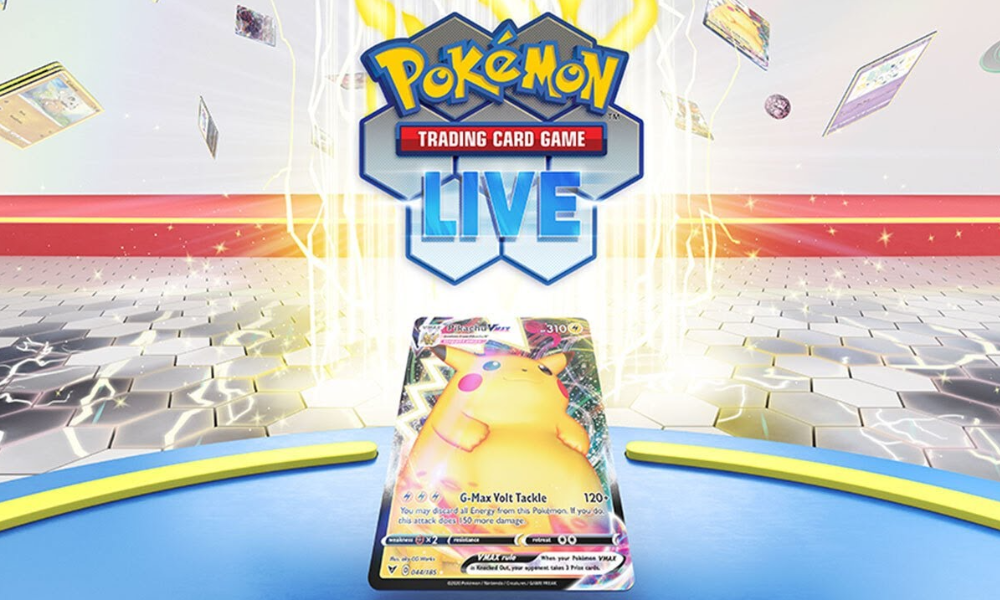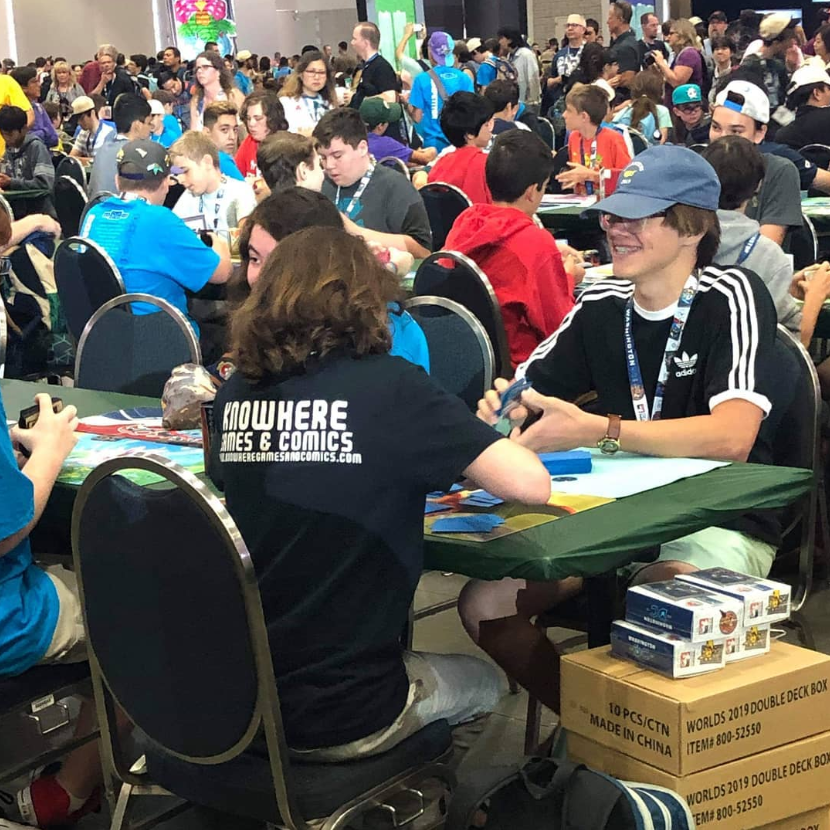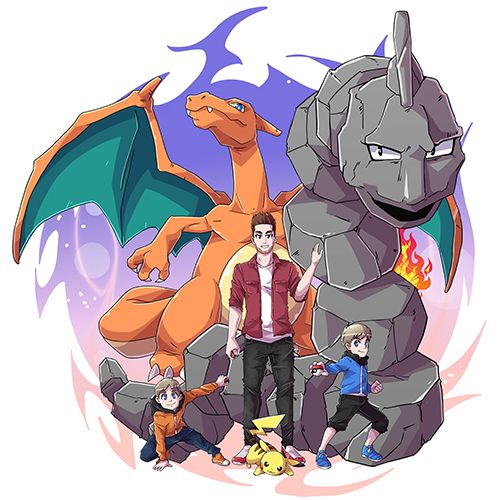This page may contain affiliate links to places like eBay and other online retailers. If you buy from a link, we may earn a small commission. Learn more.
Welcome to the thrilling world of the Pokémon Trading Card Game (TCG), where strategy, fun, and imagination collide!
This comprehensive guide on how to play Pokémon cards will introduce you to the basic rules, gameplay mechanics, and deck building strategies, providing you with all the tools you need to dive into this captivating universe.
So if you’re interested in Pokémon cards, perhaps only as a collector, this guide will teach you all you need to know to get started with the TCG.
Getting Started with the Pokémon TCG
The Pokémon Trading Card Game, appeals to individuals of all ages and interests offering an engaging experience that combines the captivating world of Pokémon with the excitement of strategic gameplay.
With an objective to assemble the strongest possible deck of Pokémon and engage in turn-based combat utilizing attacks and abilities, players can enjoy the thrill of outmaneuvering their adversaries.
To start playing, you have two options: manipulating physical Pokémon cards or utilizing digital platforms such as Pokémon TCG Online or Pokémon TCG Live. In either case, the key to success lies in constructing a balanced deck of 60 cards, comprising Pokémon, Trainer, and Energy cards.
As you dive deeper into the game, you’ll discover the importance of mastering various card types, and learning how to strategize effectively.
If you’re just beginning to explore the world of Pokémon TCG, it’s recommended to start with one of the pre-built decks available to buy. These decks provide a solid foundation, allowing you to learn the basics of the game and develop your own strategies over time.
As you become more familiar with the game, you can expand your collection and customize your deck to match your unique play style and preferences.
Physical Pokémon Cards
For those eager to dive into the world of Pokémon TCG, physical cards offer a quick and readily available route. To begin, you can purchase a Battle Deck, which consist of 60 cards ready for use, a rule book, a playmat, damage counters, a metallic coin, and a deck box. V Battle Decks, in particular, include powerful V type Pokémon, ensuring an exciting and competitive experience right out of the box.
Another option for beginners is a Battle Pack, which contains two Battle Decks designed to be played against each other.
As you become more comfortable with the game and seek to expand your physical Pokemon card collection, you can purchase booster packs, which contain a random assortment of cards, or even acquire specific cards through singles or trading with fellow players. This allows you to tailor your deck to your preferred play style.
Digital Pokémon TCG Platforms
In today’s digital age, Pokémon TCG enthusiasts also have the option to enjoy the game through Pokémon TCG Live.
It offers a free-to-play route into the game, allowing you to engage in battles, manage your digital card collection, and even participate in online events.
The digital platform features tutorials to help you learn the rules and mechanics of the game, as well as a deck builder to assist you in constructing your ideal digital deck.
One of the key advantages of digital platforms is the ability to add Pokémon cards to your collection by scanning code cards included with physical booster packs and decks.
This gives you the best of both worlds, allowing you to enjoy the tactile experience of physical cards while also benefiting from the convenience and accessibility of digital play. As you become more immersed in the world of Pokémon TCG, you will discover countless opportunities to expand your digital collection and engage in exciting battles with players from around the world.
The Components of a Pokémon Deck
A well-balanced Pokémon TCG deck consists of three primary components: Pokémon cards, Energy cards, and Trainer cards.
Each card type plays a vital role in the game, and understanding their unique functions and interactions is crucial for building a formidable deck and achieving victory in battles. A deck must be comprised of exactly 60 cards, with a minimum of one Basic Pokémon and a maximum of 4 copies of any card excluding basic energy cards.
Pokémon cards are the stars of your deck, each possessing its own unique set of attacks and abilities that can be utilized during gameplay. These cards come in various types, including basic, Stage 1, and Stage 2, as well as powerful GX and EX cards. Mastering the art of evolving your Pokémon and managing their abilities is essential for outmaneuvering your opponents and securing victory.
Energy cards provide the fuel for your Pokémon’s attacks, while Trainer cards offer valuable support, enabling you to heal damage, supply additional energy, or even grant your Pokémon special abilities.
Pokémon Cards
Pokémon cards are available in several varieties, including basic, Stage 1, Stage 2, GX, EX, VMAX, and VSTAR cards. Each card possesses its own unique set of attacks and abilities that can be utilized during gameplay, giving you a wide range of options when constructing your deck.
Evolving your Pokémon during gameplay is a crucial aspect of the Pokémon TCG, allowing you to power up your Pokémon and unlock new abilities.
To evolve a Pokémon, you must first own a character card of any respective evolution line. For example, Eevee is one of them. From there, you can choose the appropriate stage 1 or stage 2 card from the evolution line and evolve your Pokémon accordingly. It’s important to note that evolved Pokémon can only use the attacks and abilities listed on the evolved character card, and evolving a Pokémon removes any special conditions and attack effects from the previous card.
In addition to their attacks and abilities, Pokémon cards also feature a retreat cost, which is the number of energy cards required to return the active card to the bench and substitute another Pokémon. Successfully managing your Pokémon’s retreat costs and energy attachments is essential for maintaining a strong position on the battlefield, as it allows you to adapt to your opponent’s moves and execute your own strategies effectively.
Energy Cards
Energy cards are a vital component of the Pokémon TCG, providing the necessary power for your Pokémon to execute their attacks. These cards come in various types, including grass, fire, water, lightning, psychic, and fighting, allowing you to customize your deck to suit your preferred play style and strategy.
During your turn, you can attach only one energy card to a character card. This limitation adds a strategic element to the game, as you must carefully consider which Pokémon to power up and when to do so. Balancing your energy attachments is essential for maintaining a strong presence on the battlefield and ensuring that your Pokémon are ready to strike when needed.
When retreating a Pokémon, its attached energy cards are discarded, making energy management even more critical. Knowing when to retreat and when to press forward with your active Pokémon is a key aspect of the game, as it can determine the outcome of battles and, ultimately, your success in the Pokémon TCG. Managing your discard pile effectively can also play a significant role in your strategy.
Trainer Cards
Trainer cards play a crucial role in supporting your Pokémon during battles, offering a range of benefits and effects that can give you an edge over your opponents. These cards come in three main categories: Item, Supporter, and Stadium, each providing unique advantages and strategic options for your gameplay.
Item cards, like Pokémon Tool cards, can be connected to a character card. This provides a particular effect for that character. Supporter cards, on the other hand, offer powerful one-time effects that can help you heal damage, supply additional energy, or even grant your Pokémon special abilities during a battle.
Finally, Stadium cards are a unique type of Trainer card that remains in play and has its own specified rules, affecting both players and potentially altering the course of a game. In some instances, a prize card can also be an exciting addition to the game.
Mastering the use of Trainer cards is essential for developing a well-rounded strategy and maximizing your chances of victory in the Pokémon TCG.
Setting Up Your Pokémon TCG Game
- Before diving into a Pokémon TCG battle, it’s crucial to properly set up your game.
- To begin, perform a coin flip or play rock-paper-scissors to determine who goes first.
- Next, shuffle your deck and draw a hand of seven cards, setting aside the top six cards of your deck as prize cards.
- Place one basic Pokémon card face down as your active Pokémon. You can also have up to five more basic Pokémon on your bench.
- If your initial hand of cards does not contain any basic Pokémon cards, then you must reveal your hand to your opponent.
- After that, draw seven more cards.
- This process can be repeated as many times as necessary until you have at least one basic Pokémon. However, your opponent is allowed to draw an extra card for each time you mulligan, so be mindful of this potential disadvantage.
- Once your active and benched Pokémon are in place, you can begin playing the game.
- During each turn, you’ll draw cards, choose actions, attack your opponent, and manage any status conditions affecting your Pokémon.
Turn Phases and Gameplay Mechanics
The Pokémon TCG is played in a series of turn phases, which include drawing cards, choosing actions, attacking your opponent, and managing any status conditions affecting your Pokémon. Understanding these gameplay mechanics is essential for developing effective strategies and maintaining control of the battlefield.
Attacking is a key aspect of the Pokémon TCG, with each Pokémon card featuring its own unique set of attacks and abilities.
In order to launch an attack, the Pokémon card must have a specific amount and form of energy. Without it, the attack can not be used. Damage is then assigned to your opponent’s active Pokémon in the form of damage counters. If a Pokémon accumulates damage equal to its hit points, it is considered defeated and must be replaced with a Pokémon from the bench.
In addition to attacking, managing the special conditions affecting your Pokémon is another crucial aspect of gameplay. Special conditions include Sleep, Burned, Confused, Paralyzed, and Poisoned, each with its own unique effects and consequences. Remedying these conditions often involves evolving your Pokémon or retreating them to the bench, which can help you maintain control of the game and ensure your Pokémon are ready to strike when needed.
Winning Strategies in Pokémon TCG
To achieve success in the Pokémon TCG, it’s crucial to develop a strong deck and adhere to a play style that suits your preferences and the unique abilities of your chosen Pokémon. This involves carefully selecting the appropriate Pokémon for your strategy, employing Pokémon for supplementary assistance during battles, and mastering the art of evolving your Pokémon to unlock their full potential.
One effective strategy for optimizing the evolution of your Pokémon is to deploy a relatively weaker Pokémon first while attaching the required energy to it. This allows you to minimize the risk of damage to your more powerful Pokémon, giving you an advantage over your opponent and increasing your chances of victory.
As you gain experience and expand your collection, you’ll also become more adept at managing your Pokémon’s abilities and energy attachments, allowing you to adapt to your opponent’s moves and execute your own strategies effectively.
Expanding Your Collection
As you delve deeper into the world of Pokémon TCG, you’ll undoubtedly want to expand your collection to improve your gameplay and explore new strategies. There are several methods for acquiring new cards, such as purchasing booster boxes, packs, theme decks and singles. These options allow you to tailor your collection to your preferred play style and ensure that you have the cards you need to build a competitive deck.
Booster packs offer a random assortment of cards, making them an exciting option for adding variety to your collection. Alternatively, purchasing singles allows you to acquire specific cards that you need to optimize your deck’s performance. For those looking to acquire a large number of cards at once, booster boxes containing 36 booster packs are an economical option.
Elite Trainer Boxes are another popular choice for expanding your collection, offering a range of cards, including booster packs, energy cards, and trainer cards, as well as a storage box and other accessories. By exploring these various options and staying up-to-date with upcoming sets and releases, you can ensure that your Pokémon TCG collection continues to grow and evolve alongside your skills as a trainer.
Summary
In conclusion, the Pokémon Trading Card Game offers an engaging and strategic experience for players of all ages and skill levels. By learning the basic rules, mastering gameplay mechanics, and developing winning strategies, you can immerse yourself in the captivating world of Pokémon TCG and enjoy countless hours of fun and excitement. With a well-balanced deck and a deep understanding of the game’s intricacies, you’ll be well on your way to becoming a formidable Pokémon TCG trainer. So gather your cards, assemble your deck, and prepare to embark on an unforgettable journey through the realm of Pokémon TCG!
Frequently Asked Questions
How do you play Pokemon cards for the first time?
If you are just starting out playing the Pokemon Trading Card Game, you need to create a deck of 60 cards that represent your collection of Pokémon and their powers. Building an effective strategy and knowing the rules of the game is crucial in order to have a successful first time experience.
It is important to understand the different types of cards and how they interact with each other. You should also familiarize yourself with the different strategies and tactics that can be used to win the game. Finally, practice playing the game with friends or online.
How many cards do you start with in the Pokemon card game?
At the start of a Pokémon card game, players draw seven cards from their own deck of 60 cards. The decks are then shuffled and each player has their own hand hidden from their opponent.
This is followed by placing basic Pokemon into your active spot and up to five on your bench.
How many cards are in a Pokémon TCG deck?
A Pokémon TCG deck typically contains 60 cards, allowing players to construct strategies for the game.
What are the three primary components of a Pokémon deck?
A successful Pokémon deck consists of three essential components: Pokémon cards, Energy cards, and Trainer cards. Collecting these cards in the right balance is key to building an effective deck.
How do I evolve a Pokémon during gameplay?
To evolve your Pokémon, you must have a basic character card that’s part of an evolution line and then select the appropriate stage 1 or stage 2 card from that line to proceed. Once this is done, your Pokémon will be evolved.




